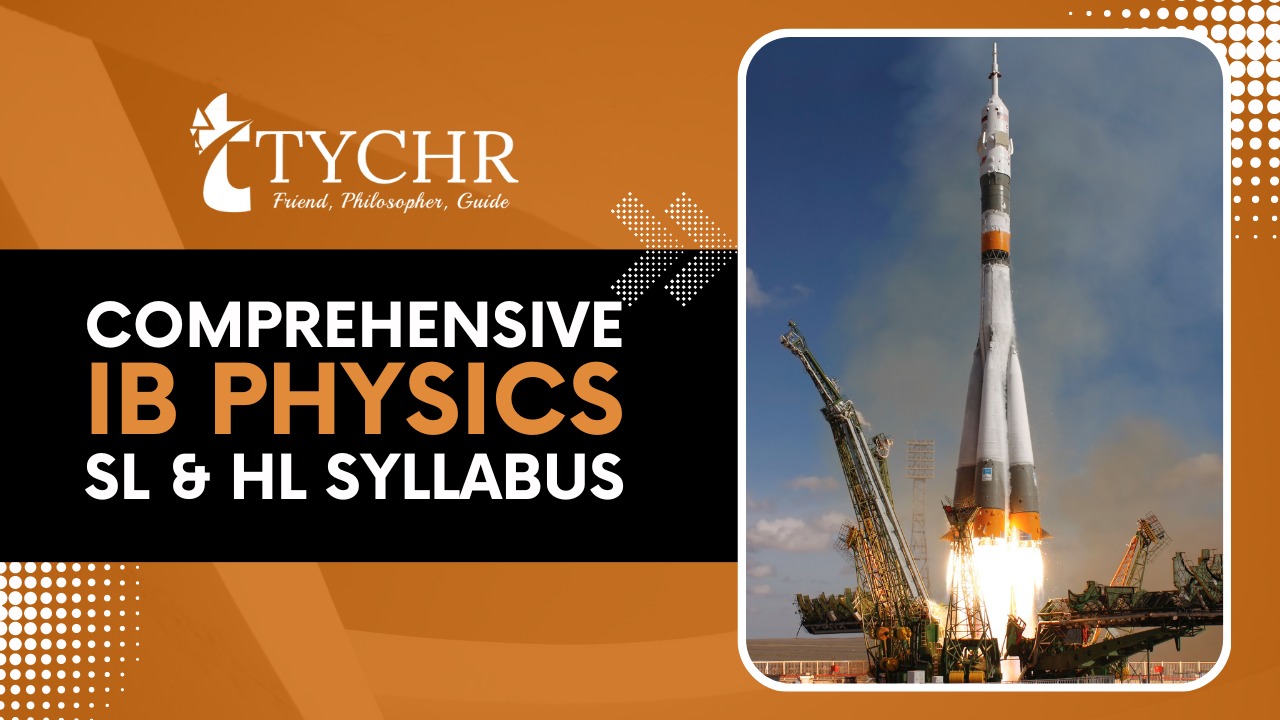Table of Contents
- 1 Unit 1: Measurements and Uncertainties
- 2 Unit 2: Mechanics
- 3 Unit 3: Thermal Physics
- 4 Unit 4: Oscillations and Wave
- 5 Unit 5: Electricity and Magnetism
- 6 Unit 6: Circular Motion and Gravitation
- 7 Unit 7: Atomic Nuclear and Particle Physics
- 8 Unit 8: Energy Production
- 9 Unit 9: Wave Phenomena
- 10 Unit 10: Fields
- 11 Unit 11: Electromagnetic Induction
- 12 Unit 12: Quantum and Nuclear Physics
- 13 Option A: Relativity
- 14 Option B: Engineering Physics
- 15 Option C: Imaging
- 16
- 17 Option D: Astrophysics
Unit 1: Measurements and Uncertainties

This foundational unit of the IB Physics Syllabus introduces students to the principles of measurement and the concept of uncertainty in experimental data, essential for accurate scientific analysis.
| Subtopic | Subtopic Number | IB Points to Understand |
| Measurements in Physics | 1.1 (SL) | Distance is used to define the position of different objects. Metre (m) is the SI unit.
Time is used to distinguish different events. Second (s) is the SI unit of time. Mass defines how much matter the object consists of. Kilogram (kg) is the SI unit. Density is the ratio of mass to the volume occupied by an object. This ratio is the same for objects made of the same material. Displacement is the distance moved in a particular direction. It defines the movement of an object. An angle is formed when two lines intersect. Radian (rad) is the SI unit of angular measurement. Significant figures: The first non-zero digit from the left is the most significant digit. |
| Uncertainties and Errors | 1.2 (SL) | Types of Errors: Random and Systematic
To reduce errors, the mean of all measurements is taken. Uncertainties in gradients: To find the uncertainty in gradient, steepest and shallowest lines passing through all the error bars are drawn. Then, the uncertainty is half the range of gradients. The uncertainty of the form ∆x is absolute uncertainty. Fractional uncertainty is ∆𝑥/x. |
| Vectors and Scalars | 1.3 (SL) | Scalars are quantities that have only magnitude.
Vectors have magnitude and direction. Addition of Vectors: Graphical and Analytical Approach Resolving Vectors: Every vector can be resolved into a number of vectors such that when those vectors are added, the result in the original vector. Subtracting Vectors: The vector to be subtracted is written as a negative of the vector and added to the other vector. |
Unit 2: Mechanics
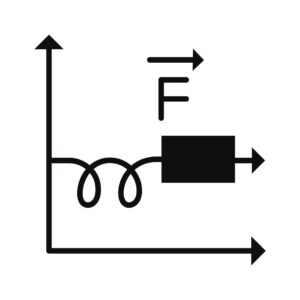
Mechanics explores the fundamental principles of motion, forces, and energy. Students study concepts like Newton’s laws and kinematics.
| Subtopic | Subtopic Number | IB Points to Understand |
| Motion | 2.1 (SL) | Displacement is the length of the shortest path between two points
Velocity is a vector quantity: displacement per unit time Speed is a scalar quantity: distance traveled per unit time Acceleration is the rate of change of velocity. The “suvat” equations of motion: Projectile motion – When an object moves in a projectile motion as a result of gravitational pull, it travels along a curved route Fluid resistance and terminal speed – There are opposing forces acting on an object when it moves through a fluid (a gas or a liquid) |
| Forces | 2.2 (SL) | Force tries to change the state of motion of the body. Can be represented by vectors
Free body diagrams: Free body diagrams are drawn for a single body indicating all the forces acting on the body. Translational equilibrium: A system is said to be in translational equilibrium if the net force acting on the system is zero. Gravitational force (weight): The force exerted by the earth on objects Friction: There are two types of friction. Static and dynamic. They are denoted by coefficients Newton’s Laws of Motion |
| Work, Energy and Power | 2.3 (SL) | Work done by a force is defined as the product of force and distance moved in the direction of force.
Energy is the quantity which enables a body to do work on another body. Law of conservation of energy: Energy can neither be created nor destroyed but can only be transferred from one form to another form. In a collision, momentum and energy gets exchanged between objects. There are 2 types: Elastic and Inelastic Power is the work done per unit time. |
| Momentum and Impulse | 2.4 (SL) | Momentum is the product of mass and velocity.
Impulse is the change in momentum of a body. Elastic and Inelastic Collision – If there is no kinetic energy lost in the impact, the collision is said to be perfectly elastic. A collision is considered to be inelastic if any of the kinetic energy is converted to another kind of energy during the collision. Conservation of linear momentum – The momentum never changes in an isolated collection of objects; that is, the total momentum of a system remains constant. |
Unit 3: Thermal Physics
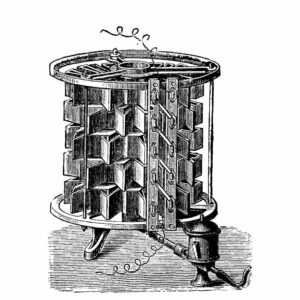
This unit delves into the behavior of matter at different temperatures. It covers topics such as heat transfer, thermodynamics, and kinetic theory.
| Subtopic | Subtopic Number | IB Points to Understand |
| Thermal Concepts | 3.1 (SL) | Heat is a form of energy related to the kinetic energy of molecules.
Temperature is the degree of hotness or coldness of a body. It is a scalar. At absolute zero temperature (0K), the molecular motion stops completely. Heat transfer can happen in three ways: Conduction, Convection and Radiation Thermal capacity of a body is the amount of heat required to raise its temperature by 1 ̊C The specific heat capacity of a material if the amount of heat required to raise the temperature of unit mass of substance by 1 ̊C. Specific latent heat of vaporisation is the amount of heat required to convert unit mass of substance from liquid to gas at constant temperature. Specific latent heat of fusion is the amount of heat required to convert unit mass of substance from solid to liquid at constant temperature. |
| Modeling a Gas | 3.2 (SL) | Avogadro’s hypothesis states that equal volumes of all gases contain equal number of molecules at same temperature and pressure. Avogadro’s constant is equal to 6.022 × 10^23
Assumptions made for developing theories for ideal gasses The total kinetic energy of N molecules of gas at temperature T is 3/2 𝑁𝑘𝑇. Here k is the Boltzmann constant and has a value of 1.38×10-23JK-1.
Boyle’s law: The pressure of a fixed amount of gas at constant temperature is inversely proportional to its volume. Charles law: For a fixed amount of mass at constant pressure, the volume occupied by a gas is directly proportional to absolute temperature. Gay-Lussac’s law: The pressure of a constant amount of gas contained with constant volume is directly proportional to the absolute temperature of gas. R is called universal gas constant and has a value of 8.314 J mol-1 K-1 |
Unit 4: Oscillations and Wave

Students explore oscillatory and wave phenomena, including simple harmonic motion and wave properties like interference and diffraction.
| Subtopic | Subtopic Number | IB Points to Understand |
| Oscillations | 4.1 (SL) | Periodic motion: A motion which repeats itself after equal intervals of time
Amplitude (A): maximum displacement from equilibrium position. Time period (T): the time taken for a complete oscillation. Frequency (f): the number of oscillations per unit time. |
| Traveling Waves | 4.2 (SL) | Wave front: A surface that travels with waves and is perpendicular to the direction in which the wave travels.
Mechanical waves: Which require a material medium to travel. Electromagnetic waves: Which can travel through vacuum. Transverse waves: The direction of vibration of waves is perpendicular to the direction of propagation of waves forming a series of crests and troughs. Longitudinal waves: The direction of vibration of waves is parallel to the direction of propagation of waves forming a series of compressions and rarefactions. The velocity of wave is given by c=fλ Electromagnetic waves travel with varying electric and magnetic fields. They travel with a velocity of 3 × 108ms-1 in vacuum and exhibit all properties of transverse waves |
| Wave Characteristic | 4.3 (SL) | The intensity of waves (I) is the power received per unit area.
The principle of superposition says that, when two waves meet, the total displacement is the vector sum of their individual displacements. Polarization is a process in which the direction of oscillation is restricted to a plane perpendicular to the direction of propagation. |
| Wave Behaviour | 4.4 (SL) | Laws of reflection and refraction
Snell’s law: For light going from medium 1 to medium 2, 𝑠𝑖𝑛𝜃1 / 𝑠𝑖𝑛𝜃2 = 1𝑛2 Refractive index = 𝑠𝑝𝑒𝑒𝑑 𝑜𝑓 𝑙𝑖𝑔h𝑡 𝑖𝑛 𝑣𝑎𝑐𝑢𝑢𝑚 / 𝑠𝑝𝑒𝑒𝑑 𝑜𝑓 𝑙𝑖𝑔h𝑡 𝑖𝑛 medium = 𝑐/v The angle of incidence for which the angle of refraction of a light ray traveling from an optically denser medium to rarer medium reaches the right angle is called critical angle. When the angle of incidence is greater than the critical angle, the light gets completely reflected without being refracted. This phenomenon is called total internal reflection. |
| Standing Waves | 4.5 (SL) | Standing waves are formed when two waves of equal amplitude, frequency traveling with same speed in opposite direction are superimposed.
Traveling waves are formed when the positions of maximum and minimum amplitude move through the medium Nodes are the points at which the displacement is always zero. Anti-nodes are the points at which the displacement varies from a maximum in one direction to a maximum in another direction When the string is excited from zero frequency, a standing wave with a single loop is formed at a particular frequency with half the wavelength. This is called the first harmonic. |
Unit 5: Electricity and Magnetism

Electricity and Magnetism focus on electric circuits, electromagnetic fields, and magnetic phenomena, providing a comprehensive understanding of these fundamental concepts.
| Subtopic | Subtopic Number | IB Points to Understand |
| Electric Fields | 5.1 (SL) | The unit of charge is coulomb. Coulomb is the charge transported by a current of 1A in a time of 1 second.
Electric forces: This force is attractive if the objects are of opposite charge and repulsive if the objects are of same charge. 𝜖0 is the permittivity of free space. It has a value of 8.854 × 10−12𝐶2𝑁−1𝑚−2 The electric field strength of a charge is the force exerted by the charge on a unit charge The electric field is a vector and the resultant field due to two charges is the vectorial sum of two fields due to charges at that point Metals: In metals, the free electrons are charge carriers. The electric current is due to the movement of electrons. Drift speed: The charge carriers move at extremely slow speed when a current flows through a conductor. A device which generates electrical energy produces Electromotive force. Emf is analogous to potential difference. |
| Heating Effect of electric currents | 5.2 (SL) | When a charge moves it results in an electric current.
In few liquids and gasses, the presence of free ions allows for the conduction of electricity. Electric power: The power transmitted when a current I flows across a pd V is P = VI Electronvolt (eV) is a unit of energy obtained by the product of charge of an electron and a volt. This value is equal to 1.6 × 10−19𝐽 Kirchhoff’s Laws: First law: It is a consequence of conservation of charge. It states that at any junction, the sum of incoming currents is equal to sum of outgoing currents. Kirchhoff’s Laws: Second law: It is a consequence of law of conservation of energy. It states that the sum of all variations of potential in a closed loop is zero. Electrical resistance of a component is defined as 𝑅 = 𝑝𝑜𝑡𝑒𝑛𝑡𝑖𝑎𝑙 𝑑𝑖𝑓𝑓𝑒𝑟𝑒𝑛𝑐𝑒 𝑎𝑐𝑟𝑜𝑠𝑠 𝑡h𝑒 𝑐𝑜𝑚𝑝𝑜𝑛𝑒𝑛𝑡 / 𝑐𝑢𝑟𝑟𝑒𝑛𝑡 𝑖𝑛 𝑡h𝑒 𝑐𝑜𝑚𝑝𝑜𝑛𝑒𝑛𝑡. The SI unit of resistance is ohm (Ω). Ohm’s Law: The potential difference across a component changes linearly with current when the physical conditions of the component do not change. |
| Electric Cells | 5.3 (SL) | Analogue meters: They have a mechanical system of a coil and a magnet.
Digital meters: Shows the value of pd across its terminals digitally. Ammeter: It measures the current in the circuit. It is connected in series with the circuit and ideally there is no drop in pd across it. Voltmeter: It measures the pd across a component. It is connected in parallel to the component where the pd has to be measured and ideally, no current passes through it. Resistivity is the resistance of a material of unit length of unit area of cross section. Semiconducting diodes are made such that it allows current flow in only one direction. Thermistors exhibit high sensitivity to temperature. Its resistance falls with increase in temperature and can be used to measure temperature. A capacitor is effectively two parallel conducting plates separated by a distance. Primary cells are consumed completely after a single use and cannot be used multiple times. Secondary cells can be charged using electrical energy when consumed multiple times. The capacity of a cell is the ability of the cell to store charge. A secondary cell can be charged by connecting an external current source of pd higher than that of highest pd that the cell can exhibit. |
| Magnetic effects of electric currents | 5.4 (SL) | Magnetic field is produced by moving charges – magnetic field exists if there is an electric current
Fleming’s left-hand rule: This is used to find the direction of force on a wire placed in a magnetic field. The magnetic field strength of a field is given by 𝐵=𝐹 / 𝐼𝐿 Magnetic force is when electrically charged particles that are in motion, exhibit either attraction or repulsion. |
Unit 6: Circular Motion and Gravitation

This unit of this comprehensive IB physics syllabus examines circular motion and the universal law of gravitation, enabling students to understand the motion of celestial bodies.
| Subtopic | Subtopic Number | IB Points to Understand |
| Circular Motion | 6.1 (SL) | Angular displacement (θ): The angle swept by the radius. Unit is radian.
Angular velocity (ω): The angle swept per unit time. Unit is radian s-1 Time period (T): The time required by the body to complete a revolution Frequency (f): Number of revolutions per unit time If the speed of an object remains constant during the travel in a circle, then it is called uniform circular motion. Although the speed remains constant, the velocity changes due to change in direction. So, there must be acceleration. This acceleration is called centripetal acceleration and is directed towards the centre. The force that causes centripetal acceleration is centripetal force. |
| Newton’s Law of Gravitation | 6.2 (SL) | Newton’s universal law of gravitation
G is called the universal gravitational constant and has a value 6.6742 × 10−11𝑚3𝑘𝑔−1𝑠−2 The force per unit mass that a small point mass experiences at a particular location determines the strength of the gravitational field there. |
Unit 7: Atomic Nuclear and Particle Physics
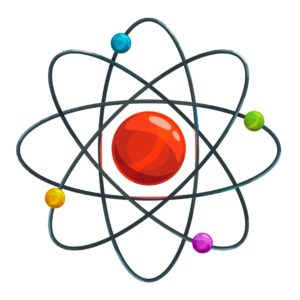
Students delve into the subatomic world, studying atomic structure, radioactivity, and particle physics, including concepts like quarks and leptons.
| Subtopic | Subtopic Number | IB Points to Understand |
| Discrete energy and Radioactivity | 7.1 (SL) | J.J. Thomson discovered the existence of electrons.
Atomic spectrum is the series of wavelengths of light released when a gas at low pressure is subjected to high voltages Discrete energy levels: Energy is received or emitted as a photon as an electron moves from one energy level to another. A nucleus loses energy through the haphazard process of radioactive decay by producing radiation. Half life is the time taken for the number of nuclei to fall to half the initial number Background Radiation: It is the radioactive noise emitted by objects in a place which interferes with the results of an experiment Absorption spectrum is similar to emission spectrum except the energy is absorbed in place of emission by the gas Bohr’s model of atoms revolves around the assumption that an electron does not emit any radiation when it revolves in orbits of certain radius De Broglie’s hypothesis explains the dual nature of matter-matter exhibits wave-like nature Heisenberg’s uncertainty principle puts a limit to the theoretical resolution for the measurement of position and momentum simultaneously. |
| Nuclear reactions | 7.2 (SL) | The charge of the nucleus is the total charge of the protons in the nucleus.
The mass of an atom is approximately the sum of the mass of neutrons and protons in the nucleus. The mass of a neutron is approximately the same as that of a proton. Binding energy is the energy released when the nucleus is put together from its constituent protons and neutrons. The binding energy released per nucleon determines the stability of the neutron. Mass defect: The difference between the mass of an atom and the sum of mass of its constituent parts Nuclear fusion: It is the fusion of two nuclei to form a bigger one Nuclear fission: A nucleus splits into two stable nuclei |
| Structure of Matter | 7.3 (SL) | Protons and electrons having charge, take part in electromagnetic interactions.
Protons and neutrons being nucleons, take part in nuclear interactions. Quarks are fundamental constituents of matter and are defined as elementary particles. Hadrons are heavy particles that take part in nuclear interactions. Protons and neutrons fall in this category. Leptons are light particles. Electrons and neutrinos fall in this category. Feynman diagrams represent the exchange particle theory in a diagrammatic manner Particles are assigned baryon and lepton numbers which are also conserved along with charge in nuclear reactions. Spin is similar to electron spin in an atom which can be either ½ or 1 ½ for baryons and 0 or 1 for mesons. Strangeness is another quantum number which is not conserved in weak interactions Quark confinement: Quarks are confined by very strong attractive forces Gluons are the exchange particles of color force. Gluons have a combination of color and anti-color. Higgs Boson is a fundamental particle created by the quantum excitation of the Higgs field in the Standard Model of particle physics. |
Unit 8: Energy Production
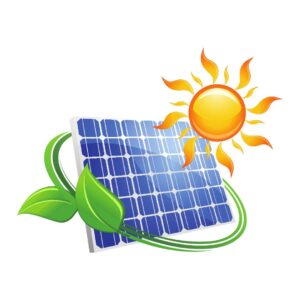
Energy Production explores various methods of generating energy and their environmental impact, aligning with the IB Physics syllabus guidelines.
| Subtopic | Subtopic Number | IB Points to Understand |
| Energy Sources | 8.1 (SL) | A primary source is directly consumed without any transformation.
Secondary source is obtained by transforming a primary fuel. Renewable sources like biomass replenish themselves in short periods of time or have unlimited supply such as solar, wind or water Non-renewable resources are consumed much faster compared to the rate at which they are formed Sankey diagram is a diagrammatic representation of flow of energy in a device or a process |
| Thermal Energy Transfer | 8.2 (SL) | Thermal Conduction: Thermal energy is transferred through vibrations of particles
Convection occurs due to the difference in densities of a liquid at different temperatures Radiation is the transfer of energy in the form of electromagnetic waves Black-bodies are ideal bodies that absorb all the radiation incident on them Wein’s displacement law: The wavelength at which the intensity is maximum (𝜆𝑚𝑎𝑥) emitted by a black body at temperature (T) is given by 𝜆𝑚𝑎𝑥 = 𝑏𝑇 Stefan-Boltzmann law: The total power emitted by a black body at a temperature T is given by 𝑃 = 𝜎𝐴𝑇^4 The albedo of a surface is the ratio of energy reflected by it to the energy incident on it The greenhouse effect is the absorption and emission of infrared and ultraviolet radiation by gasses in atmosphere and leading to a higher temperature Global warming is the increase in average temperature of earth over years primarily due to human actions. |
Unit 9: Wave Phenomena
This particular unit in IB Physics syllabus extends the study of wave phenomena, including standing waves, resonance, and wave behavior in different media.
| Subtopic | Subtopic Number | IB Points to Understand |
| Simple Harmonic Motion | 9.1 (HL) | Simple harmonic motion: It is a type of periodic motion in which the restoring force is proportional to the negative of displacement from equilibrium position.
The total energy of the object always remains constant in absence of dissipative forces. |
| Single Slit diffraction | 9.2 (HL) | Diffraction is an application of interference.
Dispersion: The angle of refraction is different for different wavelengths of light. So, white light disperse into its constituent wavelengths when passed through a prism. Single slit diffraction: When light is diffracted by a single slit that is almost the same size as the light’s wavelength, unique diffraction patterns are produced. |
| Interference | 9.3 (HL) | Double-slit interference can be observed with two coherent (of same frequency) sources of any wave. There is constructive and destructive interference.
Young’s double-slit experiment Water waves follow all laws and exhibit all properties exhibited by light like reflection, refraction, interference and diffraction. |
| Resolution | 9.4 (HL) | Solving problems involving the Rayleigh criterion for light emitted by two sources diffracted at a single slit |
| Doppler effect | 9.5 (HL) | Doppler effect in sound: The frequency of a moving source seems to change for an observer at rest and it also happens when the observer is moving and the source is at rest. |

Unit 10: Fields
Fields introduce the concept of fields as a means of explaining forces and interactions. Students study gravitational and electric fields.
| Subtopic | Subtopic Number | IB Points to Understand |
| Describing Fields | 10.1 (HL) | Electrostatic Fields
Electric potential is the work done on a unit charge to move it from a point of zero reference (infinity) to the point of concern The gravitational field of an object is the region in which another object experiences gravitational force. Gravitational field strength of a mass is the force acting on a unit mass due to the mass. Field lines are lines drawn in the direction that a mass would accelerate if placed in the field. The gravitational potential at a point is the work done per unit mass in taking a point mass from zero potential (reference) to the point of concern. The lines along which potential energy does not change are called equipotential lines. They are perpendicular to field lines. |
| Fields at Work | 10.2 (HL) | Potential energy and gradient
Potential difference between two points is the work done to move a unit charge between two points. The escape speed of a planet is the minimum speed with which a body projected would escape the gravitational field of the planet. Orbital motion, orbital speed and orbital energy Kepler’s third law: The orbital period T of a planet revolving around a sun in a circular path of radius r is related to orbital radius as 𝑇2 ∝ 𝑟3 Forces and inverse-square law behavior: Both fields obey an inverse-square law, where the force between the objects is inversely proportional to the distance between them squared. |
Unit 11: Electromagnetic Induction
Electromagnetic Induction explores the generation of electric currents through changing magnetic fields and its practical applications.
| Subtopic | Subtopic Number | IB Points to Understand |
| Electromagnetic Induction | 11.1 (HL) | When a conductor moves in a magnetic field, the (free) charges in the conductor experience force. This drives the charges in the conductor and hence an emf is generated. The current generated in this form is called induced current and emf is called induced emf.
Faraday’s law: The magnetic flux of a field across a cross-section is ∫ 𝐵 𝑐𝑜𝑠𝜃 𝑑𝐴. 𝜃 is the angle made by the area element with the magnetic field Lenz’s law: The direction of induced emf is such that it opposes the change in flux |
| Power Generation and Transmission | 11.2 (HL) | 𝜖0 is the maximum value of emf induced and is equal to 𝐵𝐴𝑁𝜔
Diode bridges: A diode bridge is a bridge rectifier circuit of four diodes that is used in the process of converting alternating current (AC) from the input terminals to direct current (DC, i.e. fixed polarity) on the output terminals. Alternating current generators A transformer consists of two coils wound around a single core. A transformer is used to increase or decrease the pd at which the power is transmitted. Rectification is the process of converting AC to DC. This is done by using diodes which are semiconductors doped on one side as P-type and the other as N-type. Half wave rectification can be achieved with a single diode Full wave rectification involves a bridge of rectifiers |
| Capacitance | 11.3 (HL) | Capacitance: The ability to store electric charge is described as its capacitance.
Dielectric materials: A dielectric material is a non-metallic substance having a high specific resistance, a negative temperature coefficient of resistance and a high insulating resistance. Capacitors in series and parallel Resistor-capacitor (RC) series circuits |
Unit 12: Quantum and Nuclear Physics
This unit delves into quantum mechanics and nuclear physics, including quantum states, nuclear reactions, and the behavior of particles.
| Subtopic | Subtopic Number | IB Points to Understand |
| The interaction of matter with radiation | 12.1 (HL) | Photons have no mass and are categorized as exchange bosons.
Photoelectric effect describes the phenomenon of electrons ejected out of the metal when a light of certain minimum frequency is incident on the metal Matter waves Pair production: The conversion of a photon into an electron-positron pair on its interaction with the strong electric field surrounding a nucleus Pair annihilation: Annihilation of matter is the opposite of pair creation, where an electron and a positron join to form two photons Tunneling is a passage of minute particles through seemingly impassable force barriers |
| Nuclear Physics | 12.2 (HL) | Rutherford scattering and nuclear radius – Rutherford experiments involved bombarding alpha particles onto a thin gold sheet.
Nuclear energy levels Neutrino takes part in weak interactions. The law of radioactive decay and the decay constant Types of radioactive decay: Alpha, Beta and Gamma |
Option A: Relativity
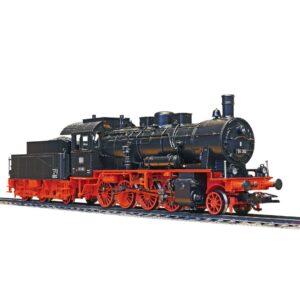
In this topic that aligns with the IB Physics Syllabus tudents have the opportunity to explore Einstein’s theory of relativity and its implications for our understanding of space, time, and energy.
| Subtopic | Subtopic Number | IB Points to Understand |
| The beginnings of relativity | A.1 (SL) | A reference frame allows us to measure the kinematic parameters of a particle with reference to a fixed point.
Translation: Step from one reference frame to another – Position is relative. Rotation: The set of axes can be rotated to form another set – Direction is relative. Boost: One frame can move with a constant velocity relative to another – Velocity is relative. Maxwell developed four equations that describe all aspects of electromagnetism. Galilean transformation equations |
| Lorentz transformations | A.2 (SL) | Postulates of special relativity by Einstein
The Lorentz transformation and factor Rest mass:The rest mass is the mass of a particle in frame which is at rest with respect to the particle. Proper time: The time interval between two events in a stationary frame (Δ𝑡0) is called proper time. Proper length: Proper length (𝐿0) is the length of an object measured from a frame which is at rest with respect to object. |
| Spacetime diagrams | A.3 (SL) | Spacetime diagrams are useful for representing the four-dimensional nature of spacetime using a graphical picture.
Using spacetime diagrams, it can be shown that simultaneous events occurring in one frame are not simultaneous in all frames. The twin paradox |
| Relativistic Mechanics | A.4 (HL) | Energy and Momentum
Particle acceleration Relativistic momentum: The momentum of an object moving at relativistic velocity |
| General Relativity | A.5 (HL) | Einstein’s equivalence principle states that gravitational effects cannot be distinguished from inertial effects.
Bending of light near masses: Light changes its path due to curvature of spacetime influenced by masses. For a mass M, the Schwarzschild radius is given by 𝑅 = 2𝐺𝑀 / c^2 . If the whole mass falls within a sphere of this radius, then it forms a black hole Pound-Rebka-Snider experiment Time dilation |
Option B: Engineering Physics

Engineering Physics focuses on the practical applications of physics in engineering, including mechanics, materials, and fluid dynamics.
| Subtopic | Subtopic Number | IB Points to Understand |
| Rigid Bodies and Rotational Dynamics | B.1 (SL) | Centripetal Force and Equations of motion
Moment of inertia is the inertial equivalent of mass in rotational dynamics. Torque causes rotation. The maximum torque (Fr) acts on a body when the force applied is perpendicular to the radius. A couple is said to act on a body when two forces of equal magnitude act on the body in opposite directions. Rotational equilibrium: A body is said to be in rotational equilibrium if the net torque acting on it is zero. Angular momentum of a body of moment of inertia I rotating at an angular velocity 𝜔 is 𝐼𝜔. When no external torque acts on a system, the total angular momentum of the system remains constant. This is called the law of conservation of angular momentum. |
| Thermodynamics | B.2 (SL) | The total kinetic energy of a gas is the total kinetic energy of all molecules of the gas.
The first law of thermodynamics states that energy can neither be created nor destroyed but can only be transformed from one form to another form. Types of processes: Isobaric, Isochoric, Isothermal and Adiabatic A cyclic process is one in which the initial state is the same as the final state. On a P-V diagram, it forms a closed loop. A carnot cycle is the most efficient cycle which converts heat to work working between two fixed temperature reservoirs which provide and take heat during the cycle. Kelvin-Planck Statement and the Clausius Statement of the second law of thermodynamics. |
| Fluids and their Dynamics | B.3 (HL) | Fluids take the shape of a container and have the ability to flow.
Pascal’s principle: The pressure applied at one point in an enclosed point under equilibrium conditions is equally transmitted to all points in the fluid. Archimedes’ principle: The buoyancy acting on an object immersed in a fluid is equal to the weight of fluid displaced by the object. In a streamlined flow, the motion of one particle passing through a point is similar to the motion of all points passing through that point. This is also called laminar flow. Bernoulli’s Equation and effect: as the speed of a moving fluid increases (liquid or gas), the pressure within the fluid decreases Viscosity impedes the relative motion between layers of fluids. It is measured in terms of coefficient of viscosity (𝜂). Stokes law: When a sphere of radius r falls through a fluid of coefficient of viscosity 𝜂 at a velocity v, the viscous force acting on it is 6𝜋𝜂𝑟𝑣. Turbulent Flow and Reynolds Number |
| Forced Vibrations and Resonance | B.4 (HL) | The quality factor (Q) is a measure of the number of oscillations the system can perform before it runs out of energy.
Forced vibration: When an oscillating system is subjected to a sinusoidal force, then the system oscillates with the frequency of force rather than its natural frequency. Resonance: When the driving frequency of the force matches with the natural frequency of the system, then the amplitude of vibration reaches a maximum. Electrical resonance: A resistor, conductor and an inductor connected in series forms a damped oscillating system. |
Option C: Imaging
This option that is in the IB Physics Syllabus covers various imaging techniques and technologies, including medical imaging, microscopy, and the physics behind image formation.
| Subtopic | Subtopic Number | IB Points to Understand |
| Introduction to Imaging | C.1 (SL) | Real and virtual image
Pole (P): The geometric centre of the reflecting or refracting surface is called pole. Centre of curvature: The centre of the sphere that forms a part of the reflecting or refracting surface. Principal axis: The line passing through the pole and centre of curvature is the principal axis Concave mirrors are converging mirrors and convex mirrors are diverging mirrors. Double convex lenses are converging lenses and double concaves are diverging. Chromatic Aberrations and viewing the image at the point of convergence of green light. This point is called the circle of least confusion. |
| Imaging instrumentation | C.2 (SL) | Astronomical refracting telescopes: In these devices, the focal length of the object is large and that of the eyepiece is small.
Astronomical reflecting telescopes: Large parabolic mirrors are used to focus light from distant objects. Types of telescopes |
| Fibre Optics | C.3 (SL) | Fibre optics use the principle of total internal reflection for transmission of information through electromagnetic signals.
Types of optical fibres used The pulse passing through the fibre suffers attenuation – loss of power and dispersion – spreading out of pulse. The main causes of attenuation are absorption and scattering Dispersion is due to material dispersion and waveguide dispersion. |
| Medical Imaging | C.4 (HL) | X-ray imaging in medicine is based on the difference in X-ray attenuation of different parts of the body.
I is the intensity of the attenuated beam and I0 is the intensity of the incident beam. 𝜇1 is the linear absorption coefficient. The intensity of attenuated beam can also be expressed in terms of mass absorption coefficient (𝜇𝑚) and density (𝜌) Computed Tomography (CT) and Ultrasound in Medicine Acoustic impedance is a measure of how easy it is to transmit the signal through various materials. Nuclear magnetic resonance in medicine (MRI): Magnetic resonance imaging involves the use of nuclear magnetic resonance for diagnosis of the brain and central nervous system. |
Option D: Astrophysics

Students delve into the study of celestial objects and the universe, including topics like stellar evolution, cosmology, and the Big Bang theory.
| Subtopic | Subtopic Number | IB Points to Understand |
| Stellar Quantities | D.1 (SL) | Stars are spherical sources of light just like the sun. The stars that are close together are called stellar clusters.
A planet is a celestial object that is in orbit around the sun. Stellar distances – distances between celestial objects Light year: The distance traveled by light in vacuum in one year. Astronomical unit: Average distance between earth and sun. Parsec(pc): If the angle subtended between two points separated by a distance 1A.U and a distant star is one arcsec, the distance to the star is 1 parsec. Apparent brightness (b) is the brightness of the star as perceived on earth. Luminosity (L) of a star is the total energy emitted by the star per unit time. Absorption spectra: The dark lines in the spectra of a star can be used to determine the gasses present in the outer layer of a star. |
| Stellar characteristics and Stellar Evolution | D.2 (SL) | A Hertzsprung-Russell diagram is a graph on which the temperature of a star is plotted against its luminosity.
Mass-Luminosity Relationship Stellar parallax: Parallax is the change in angle when an object is viewed from two different places. Birth of the star:
Chandrasekhar and Oppenheimer-Volkhoff limit |
| Cosmology | D.3 (SL) | Cosmology is the study of the universe
Hubble’s law: The recessional velocity of a galaxy is directly proportional to its distance. Hubble constant. Early development of the universe Cosmic Microwave Background (CMB) and its characteristics |
| Stellar Processes | D.4 (HL) | The Jeans criterion – Minimum mass required for a given mass to collide
Nucleosynthesis off the main sequence Hydrogen fusion occurs and the star then transforms into a red giant.
|
| Further Cosmology | D.5 (HL) | The cosmological principle – To develop a model of the universe, it is assumed that the universe is homogeneous and isotropic on a large scale
Rotation curves and the mass of galaxies Dark matter – Matter that cannot be observed Fluctuations in the CMB – Anistropy The frequencies of light from distant galaxies were measured and were found to be red shifted. This is called Cosmological red shift The density parameter (Ω) is used instead of density. This is the ratio of density to the critical density. Dark energy – It is the increase in potential energy that causes kinetic energy to decrease and causes the rate to decrease. If there is some sort of negative energy, then it would cause the opposite effect. This energy is termed dark energy. It has density and can be represented with a density parameter (R^). |
">

